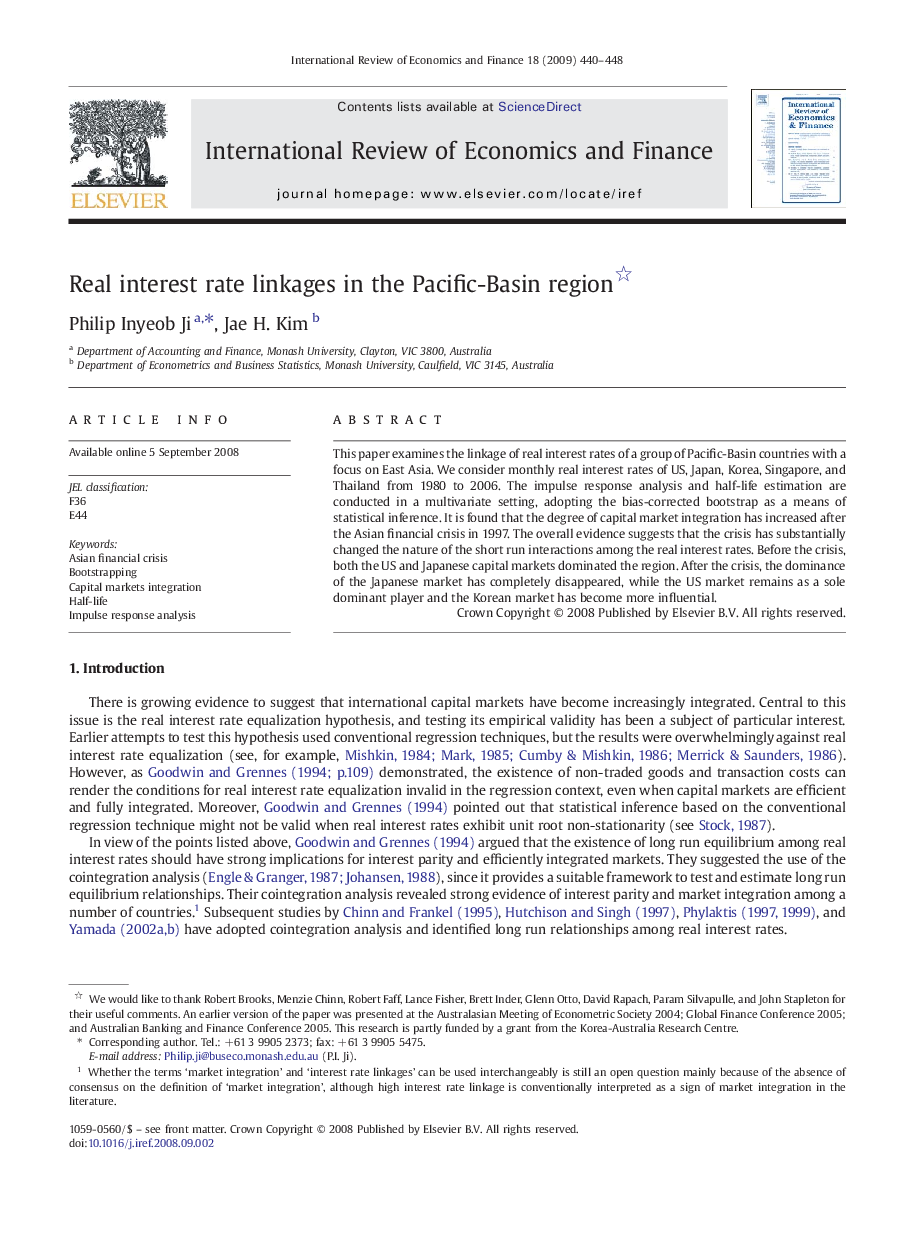| Article ID | Journal | Published Year | Pages | File Type |
|---|---|---|---|---|
| 5084079 | International Review of Economics & Finance | 2009 | 9 Pages |
Abstract
This paper examines the linkage of real interest rates of a group of Pacific-Basin countries with a focus on East Asia. We consider monthly real interest rates of US, Japan, Korea, Singapore, and Thailand from 1980 to 2006. The impulse response analysis and half-life estimation are conducted in a multivariate setting, adopting the bias-corrected bootstrap as a means of statistical inference. It is found that the degree of capital market integration has increased after the Asian financial crisis in 1997. The overall evidence suggests that the crisis has substantially changed the nature of the short run interactions among the real interest rates. Before the crisis, both the US and Japanese capital markets dominated the region. After the crisis, the dominance of the Japanese market has completely disappeared, while the US market remains as a sole dominant player and the Korean market has become more influential.
Related Topics
Social Sciences and Humanities
Economics, Econometrics and Finance
Economics and Econometrics
Authors
Philip Inyeob Ji, Jae H. Kim,
